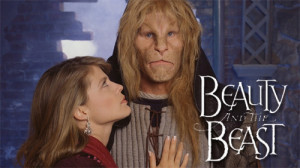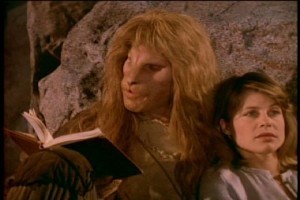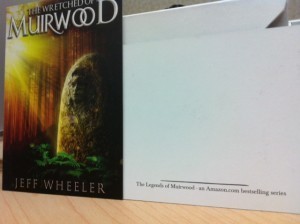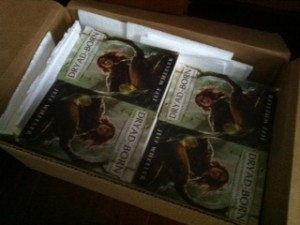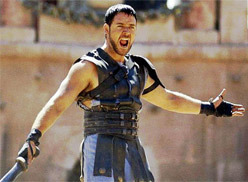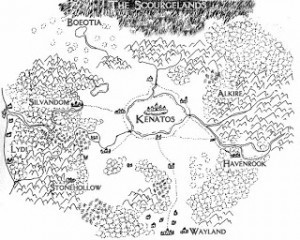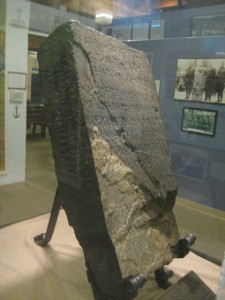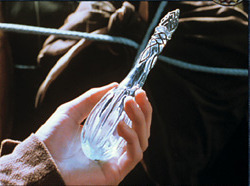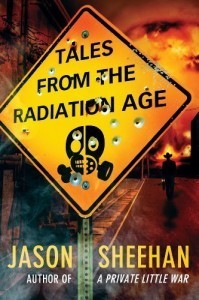Jeff Wheeler's Blog, page 10
February 17, 2014
A tribute to George R.R. Martin (sort of)
I think most authors have been inspired by the work of someone else. I’ve mentioned many times that Terry Brooks was the one who kickstarted my imagination and a desire to write fantasy novels. But there is someone else whose influence on my mind during those earlier years also deserves some credit, but not in the way you might think. You see, before George R.R. Martin wrote Game of Thrones and catapulted to superstardom as an author, I had become familiar with one of his earlier works.
It wasn’t a book, but a television series from the ‘80s called Beauty & the Beast on CBS. It was on Fridays nights and I used to watch it every weekend after work. The television series had a simple (albeit fantastical) plot – that there is a civilization of outcasts living beneath the streets of Manhattan. One of these outcasts is a half-man, half-beast named Vincent who rescued an injured woman named Catherine Chandler in Central Park and took her below to save her life. Catherine ends up working in the district attorney’s office and the two share an empathetic link that allows Vincent to experience her emotions and feelings and save her from danger when she gets in over her head. She’s also quite good at taking people down herself, having studied self-defense after recovery.
It’s a syrupy, melodramatic series to say the least, but it engaged my imagination and opened up a love of the classics that I continue to enjoy and it certainly influenced me and my writing. Let me name a few ways:
In the pilot episode, as Catherine is trying to recuperate in the underground from her severe injuries, Vincent reads to her the Dicken’s novel Great Expectations . It was that episode that made me check out the book from the library and read it. I’ve read it multiple times, and recently listened to it again during my commute. I still have the last paragraph memorized, as quoted by Catherine in that episode, and it’s still my favorite Dicken’s novel. I’ve always thought the blacksmith Joe was a great Virtus character. He still is.
The series is also full of wonderful classical music. There was an episode about a young boy who was a piano prodigy, who could play any song he heard by ear. Although the boy lives in a world of gangs and drug lords, he has a gift which sets him apart until something tragic happens. That episode introduced me to Beethoven’s Moonlight Sonata . I taught myself how to play that song and it’s still one of my favorites to play as well as one I can play from memory today.
In the underworld of Beauty & the Beast, there was a despicable villain named John Pater, a genius chemist who Vincent defeats multiple times but who continues to torment the community below as well as unleash drugs on the world above. He’s a deliciously evil man, a master of disguise and impersonation. He was known as Paracelsus, which readers of my Mirrowen series will recognize. The name ‘Paracelsus’ comes from a medieval alchemist in history.
Music is a huge part of the Beauty & the Beast story. Vincent and Catherine often went to concerts together through the underground chambers where they could listen to New York orchestra’s perform above. My love of Antonio Vivaldi came from some of these scenes, especially The Four Seasons and its amazing violin movements. It turns out that Vivaldi and I share a birthday. The emotions that classical music can generate continue to inspire me.
Finally, the series was wonderful at creating tension and angst. Like any good television show, they wanted you to come back the next week. It was especially good at cliffhanger endings. In fact, the last episode of the second season was probably the best cliffhanger ever. CBS cancelled the show after that, much to the outrage of fans. Eventually they relented and decided to film a 3rd season, which (in my opinion) was so awful that I still hold that the series truly ended after the second season, leaving us with a cliffhanger that still echoes in my mind with Catherine screaming Vincent’s name. So you can blame my tendency to do cliffhangers on Mr Martin.
When I first learned of Game of Thrones and discovered that the author had originally written screenplays for my favorite TV show in high school, I was quick to pick it up. Unfortunately, the world he created was dark, more violent, and not the kind of world that I would ever want to visit. And so I guess you could say he inspired me one more time, to write another world that had some of the magic and beauty I had experienced earlier. A world that many of my readers would love to visit if only it were real. I could almost hear Colvin saying these words at the end of Scourge of Muirwood:
I took her hand in mine, and we went out of the ruined place; and, as the morning mists had risen long ago when I first left the [abbey], so the evening mists were rising now, and in all the broad expanse of tranquil light they showed to me, I saw no shadow of another parting from her.
– Charles Dickens, Great Expectations
January 11, 2014
One Year Later…
A year ago, I posted a blog right before the re-launch of the Muirwood Trilogy under the banner of 47North. This was a few weeks before the launch of FIREBLOOD and the launch of the Whispers from Mirrowen trilogy. From my perspective back then, I had no idea what the coming weeks and months would bring. What a tremendous year it has been and I’m so grateful to have met a ton of new readers and seen proof that clean fiction sells.
I received two surprise packages from my publisher this week. The first came on Monday with a congratulatory note on WRETCHED hitting another major milestone and they gave me a box of book covers mounted on cards that can be used to write thank you notes or send to people. I wasn’t expecting anything, so it came as a delight.
The second surprise package came Tuesday night when a box arrived full of author copies of DRYAD-BORN. It was such a special experience opening the box and pulling out the first copy of a brand new novel and flipping the pages in my hand. It was a total coincidence that earlier that day, I had asked the publicity guy for 47North if I could give away advanced copies to a handful of early readers. I posted a note to my “street team” on Facebook and the copies were snatched up really fast. I had no ideas I was going to get mine that same day. I had to walk a copy over to a neighbor and friend across the street and drop off a few copies around town this week. It’s great having a new book out and I’m so excited to hear what you think about the sequel and the revelations. I’m hard at work trying to finish the final book of the trilogy, POISONWELL.
Hopefully you’ve already pre-ordered your copy! Just to remind you though, if you buy the print version of any of my 47North titles through Amazon, it qualifies you for the Kindle Matchbook deal where you get the Kindle version for $0.99. And when you buy the Kindle version, you can get the Audible audiobook version for $1.99. It’s such a great deal – all three versions for less than the full price of the paperback.
Over the last twelve months, I have learned so much about the publishing world. I’ve met many authors (we hang out together on private Facebook boards), I’ve received so many “likes”, tweets, e-mails, and kind words from so many of you. I’ve even run into one of you at Little Caesars picking up pizza for my kids.
As I close my first blog posting of 2014, I just wanted to say a big thank you to you, my awesome readers. I’ve got many more stories left to tell. Thank you for reading my books. Thanks for telling your friends about my books. Thanks for the e-mails and all the words of encouragement. In a few months, I will be done with the last book of this series and will talk to 47North about what I’d like to write next.
Stay tuned and get ready for February 4th, launch day! If you haven’t signed up for my e-mail list yet, please feel free to. You can from the main page of my website here or through my author Facebook page.
December 20, 2013
The Hulu Effect
I’d like to give my wife credit for creating the title of this blog posting. We’ve been talking about a trend that we’re seeing and maybe you are too. Recent news reports call it “binge-watching” (http://finance.yahoo.com/news/were-country-binge-watchers-feel-164000788.html) but it applies to reading books too. This is when you gulp down an entire series of Downton Abbey in a week. I’ve also seen many reviews from readers who have gobbled the entire Muirwood Trilogy in two days (which I believe is still the record). I’ve seen many comments and e-mails from readers who have stayed up all night to finish Scourge. I love it! So is this a new trend or has it been happening for a long time? I don’t think I know the answer, but it raises some curious questions.
For example, would you rather wait to start reading a series until all the books are published? Or are you okay waiting a year in between novels, depending on the publisher’s schedule? For very popular series, like Harry Potter, I did not want to wait until everything was done and looked forward with anticipation for the next book to come out and usually made time to read it soon after publication. I don’t do that with many books though and usually wait until I hear about a new book or series before giving it a try. I started on the Wheel of Time series by Robert Jordan and finally got fed up trying to keep up and eventually abandoned the series (which finally concluded after the author died!). When my publisher was getting ready to launch FIREBLOOD earlier this year, they deliberately left off the “Whispers from Mirrowen” tagline on the cover because they knew some readers won’t even try a book that’s part of a brand-new series. Is this because of the Hulu Effect? Or is it the GRRM effect?
Back when I made the decision to self-publish the Muirwood Trilogy, I chose to make them available all at once. I didn’t want to arbitrarily make my readers suffer in anticipation when they could have and read the entire series and get free shipping by ordering all of them from Amazon. With Mirrowen, it’s a different situation because I’m still writing the books, so there is a delay in when you get them. By the time you finish DRYAD-BORN in February, I’ll still be hard at work on the final book. I’m hurrying, believe me.
Which leads me to a question I have for you about the Hulu Effect. If you had a choice, would you rather wait a little longer and get an entire trilogy at the same time, or would you rather get them one at a time and suffer the delay?
I’d love to hear your thoughts. Choose your answer on the survey below and leave your comments for me. I’d love to hear your thoughts. To access the survey, first click on a number below of how you liked this blog posting. Then it will take you to the survey – only two questions, so it’s short.
Happy Holidays!
Jeff
.
December 12, 2013
Faith and Fantasy Day 10: “Is Religion Evil?”
My blog entry for Melissa F. Olson’s event:
Welcome to the twelve-day, twelve-author blog event, Faith and Fantasy: Twelve Days of Deliberation! Today’s post is by legendary Muirwood trilogy author Jeff Wheeler.
“Is Religion Evil?”
http://melissafolson.com/mfoblog/faith-and-fantasy-day-10-is-religion-evil-by-jeff-wheeler
November 27, 2013
Sneak Preview: Book II of Whispers from Mirrowen (first 3 chapters)
Tomorrow is Thanksgiving and I wanted to do something special to show my appreciation to all my loyal (and patient) fans. My publisher has allowed me to post the first three chapters of Dryad-Born. The publication date is Feb 4, 2014 so this may be torture to some of you. But if you wanted to get a sneak preview of the book to read during the holidays, here you go. Enjoy, and thank you for supporting me!
File: Dryad-Born excerpt ch 1-3
I’ve also created a mailing list that you can sign up for here on my website or through my Facebook author page. I won’t be sending many newsletters or announcement but subscribing to this list will help you be first to know any major announcements. Please take a moment and sign up – the form is on the navigation bar on the right.
November 23, 2013
Guest Blog by Roberto Calas: The Flourish
So, you’ve been writing stories since high school. Or maybe you just started recently. You’ve got a Nanowrimo or two under your belt and you’re starting to find your groove. And now, you’ve decided to get serious about your writing. I applaud you for it. And I will give you one piece of advice that took me years to learn:
If you want to separate yourself from the crowd, you need flourish.
Readers can choose from thousands of different stories. Hundreds of thousands. But what they want is a story that will jump off the page. They want to be entertained. You are not a writer, you are a literary gladiator, thrilling the crowds as you knock down one sentence after the other.
“Are you not entertained? Are you not entertained?”
The writers of the movie Gladiator might have been speaking through their protagonist with those lines. For those who haven’t seen Gladiator, Proximo is an older man, a former gladiator who won his freedom. He owns his own gladiators now, and he tells one of them (Maximus, the story’s protagonist) this:
“I was not the best because I killed quickly. I was the best because the crowd loved me. Win the crowd and you will win your freedom.”
That line has always resonated with me, because it applies to every type of creative writing there is. Do not write quickly or dispassionately. Thrill the crowd. Make them love you and you will win them forever.
Maximus takes Proximo’s words to heart and when he next marches into the arena, he takes ona handful of men and kills them in dramatic and acrobat fashion. After he does so, he holds his hands up to the crowd in a moment of self-loathing and asks, “Are you not entertained?”
We have to make those acrobatic kills with our writing, but fortunately we don’t have to hate ourselves for it. Because … well … this metaphor is falling apart isn’t it?
Okay, so, how do we, as writers, make the crowd love us?
We do it with flourish, my friends. We do it with flourish.
I know my own work best, so I will provide an example from my novel, The Scourge. The protagonist, a knight named Sir Edward, is trying to goad a mob of mindless, zombie-like demons to a battlefield where his allies are outnumbered. He hopes the demons will even the odds. Here’s a section from that scene:
They pour from the millhouse in an endless stream of madness, their noses flared to the scent. I nod to Tristan and Morgan. “The mint works.”
We trot our horses away from Corringham. The legions follow behind us, staggering and screaming.
Fairly straightforward, no? Any middling writer could churn that out. It’s solid and quick. But I don’t want to kill quickly. I want to thrill the crowd. I want flourish.
At this point I guess I should explain what flourish is. Here’s how I see it: It’s the crescendo of music that gets your heart racing while you watch a movie. It’s the magician throwing his arms into the air after a masterful trick. It’s the horse rearing and pawing at the sky while the cowboy waves his hat and whoops at the top of his lungs. It’s that touch of pizazz. It’s flourish.
I wanted flourish in my scene with Sir Edward, so for the paragraphs immediately following the example above, I let my protagonist take over. And he did his best to thrill the crowd:
In France, I often led companies of men. At Nájera I commanded the entire left wing of our formation. But I have never led an entire army out to battle. It has been a secret desire of mine. To thunder toward the French with five thousand howling men at my back, our wind-whipped standard held high above my head.
I have only five or six hundred soldiers behind me tonight. They are men, women and children, and they are not particularly fast. But they howl with the unholy power of hell. Their lurching footsteps thunder upon the heaths behind me. I hold no standard, only a smoldering flowerpot, but I have achieved my secret desire. I ride toward the French with an army.
An army of the dead.
I tried to use the most dramatic language I could, without tipping into melodrama (hopefully I succeeded). I tried to build up the tension slowly, raise the excitement bit by bit like that crescendoing music I mentioned earlier.
But flourishes don’t always required long paragraphs. They can come in the little details, too. The tiny touches you add that that bring a symphony-finale to an idea. In my epic fantasy, The Beast of Maug Maurai, one of the main characters is larger than life. He’s a grizzled old hero named Black Murrogar and I wanted to make sure readers knew that he was something special. So I added a flourish:
Murrogar sat with Ulrean today on the final leg of their journey to Nuldryn Duchy. The old warrior wore a new crimson tabard over the old, blackened mail of the King’s army, the Laraytian Standards. He wasn’t a Standard anymore, but he would wear no other armor. He’d be buried in that blackened chain. If anything ever killed him.
Did you see it? The bulk of the paragraph does a decent job of describing Murrogar, but it’s the little bonus at the end that adds the flourish: “If anything ever killed him.” A small fanfare that makes the passage resonate in a way that description alone could not achieve. Just five little words that I hope will thrill the crowd.
Want another one from The Beast of Maug Maurai? Here are a few short sentences with a flourish at the end. The setup is that a group of soldiers are fighting creatures called thrulls, and some of the creatures try to escape by fleeing into a river called the Serinhult:
Jjarnee Kruu fired bolt after bolt from his three crossbows. He rarely missed. Thrulls fell thrashing into the water and the Serinhult carried them to another world.
It’s a subtle thing here, but it’s a flourish. The thrulls could have fallen, thrashing, into the water and been carried downstream. But they weren’t. The Serinhult carried them to another world. Flourish. Crescendoing music. Happy cowboy.
Are you not entertained?
Roberto Calas is an author and lover of history. His serial trilogy ( The Scourge ) is about a 14th century knight fighting his way through a demon-infested England to reunite with the woman he loves. And every bit of it is true except for the made up parts. In addition to The Scourge series, Roberto has written The Beast of Maug Maurai (fantasy), and Kingdom of Glass (historical fiction in the Foreworld universe).
And they all have flourish.
Roberto lives in Sandy Hook, Connecticut, with his two children, and visits the United Kingdom on a monthly basis to be with his fiancée, Annabelle. Sometimes he fights demons to get to her.
You can learn more about Roberto on his website: http://robertocalas.com .
November 16, 2013
Here There Be Dragons
There is something essential about having a map in a fantasy world. Back during medieval times, a cartographer would reach the edge of their known world and often draw a picture of a dragon or a sea serpent with the label, “Here There Be Dragons”—meaning, in short, “I have no idea what’s over here.”
I write fantasy fiction and maps have always intrigued me and are a key part of my writing process. Just as the story evolves, so do the maps as I continue to build the world and explore new areas. Let me illustrate how this works using the world of Landmoor as an example.
First off, I am not an artist. Sometimes I sketch my maps on my computer and sometimes I sketch it by hand. There needs to be a mix of mountains, forests, valleys, and rivers. There are little stories behind each of the countries and places and how their history fits into the general plot. I like to keep the borders of my worlds rather vague, suggesting that there are places that have not been discovered yet; where the dragons live, so to speak. It gives me flexibility as an author to continue building the world.
When I was writing my novels Landmoor and Silverkin, I was lucky to have a digital artist friend, Reuben Fox, who took my pathetic rendering and transformed it into the lush map you see above. But the maps always start out as black and white in my head or on the page.
Another question I get asked is how I choose all the place names. This is part of the creative process that I really enjoy and I rarely have trouble coming up with new names. I have a notebook where I write down different character and place names when the flashes of inspiration strike and I often consult that list to pick and choose. I also study maps of this world to be inspired by countries, cities, rivers, and mountains that exist today. But in each of my worlds, there are usually a few key locations which are part of the storyline, the pivot around which the plot rotates.
Take Landmoor—for example. When I was first creating that world, the plot centered around a small fortified town near the edge of a swamp and close to the sea—kind of like a medieval New Orleans. That was the first location I crafted in the world. A moor is a swamp. I stuck the name “land” to it and liked how it looked on paper (I was fourteen when I first imagined that story). I’m always combining words and testing out how they fit together. As the plot of the world began to develop, I realized that there were three different political powers struggling for control over the valley between the two mountain ranges. Because the valley has limited ground, it caused military and political tensions between them. Landmoor became a crossroads for this conflict and provided a place where the tensions intersected and flared up. Add a secret magic hidden in the swamps, some powerful sorcerers manipulating the kingdoms, and soon you have a situation ripe with tension and conflict in which to plop the main character, the son of an eminent trading family who longs to escape his social class and explore the kingdoms outside his stifling cultural expectations.
Now, even though maps are so important to me, I’ve often been asked why I didn’tinclude one in the world of the Muirwood Trilogy. I do have maps of this world and use them for reference, but I did not include any with the novels deliberately. You see, in Landmoor the main character, Thealos, comes from a trading family and he knows the world he grew up in. He’s familiar with the borders and the politics. In Muirwood, the main character is a kitchen servant who only knows the grounds of Muirwood Abbey where she was abandoned as a baby. As she leaves that world, she is completely lost in a vast world full of locations and politics she knows nothing about. Readers explore the world through Lia’s eyes and there is no looking ahead, trying to use the map to predict the plot or where she may end up. In the first book, she explores the land around her beloved Abbey. In the second book, she gets to see more the kingdom she lives in. In the third book, she leaves her kingdom and travels to another. I left the reader blind on purpose.
One of the neatest things about creating a new fantasy world is that I don’t determine everything in advance. I use a general map as a framework for where the action will happen. But often as the characters wander around a bit, I weave in elements from my own personal travels or places I wish to travel someday.
Let me go back to Muirwood for a moment. I knew the main character, Lia, was a scullion abandoned at an Abbey kitchen. I began searching Google for medieval kitchens to help inspire me. I found a striking image of the Abbot’s kitchen at Glastonbury Abbey in England. I even went so far as to e-mail the groundskeeper and ask for pictures from the inside, which he generously e-mailed to me. On the Abbey’s website, I found an image of the grounds: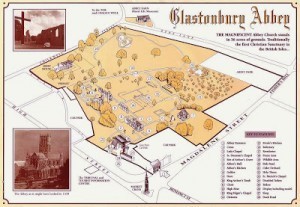
On that map, I discovered delightful details, like the Cider Orchard which played a prominent role in the story. This was the beginning of the world. Then I hunted down an ancient map of Glastonbury and the environment around and that research led to other opportunities for topography, climate, and story ideas. Before I had crafted the first chapters, exploring this map inspired many of the scenes that would later happen.
World-building doesn’t happen all at once. While mine begins with a map and a general understanding of the plot and characters and how they will mesh together, I explore the world with my characters leading the way and invent the things that need to be filled in.
Currently, I’m writing the last book of the Mirrowen Trilogy. Yes, it also started with a hand-sketched map. On the northern edge of the map is a scribbled area known as The Scourgelands. For the first two books of the series, I’ve hinted at how dangerous and perilous it is. Now I’ve dragged my characters into the midst of it and am trying to make the journey fit the hype. It’s a land of nightmares and forgotten magic. I can’t wait to drag my readers there next. Perhaps I should post a sign outside that reads, “Here There Be Dragons.”
October 28, 2013
Guest Blog by Neve Maslakovic: History’s Mysteries (or Where to Look for the Story)
by Neve Kaslakovic
I’ve written two time-travel whodunits and am about to embark on the third in the series. My characters, Julia Olsen, science dean’s assistant, and Nate Kirkland, chief of campus security, solve crimes in STEWie’s (SpaceTimE Warper) lab and wherever its time-traveling basket happens to go. When I got the idea for the series, I thought it would be fun to have a different setting for each book: in The Far Time Incident, Julia and Nate would head to the Ancient Roman world; in The Runestone Incident, to medieval Americas; and so on.
And it has been great fun. But with the optimism of a writer whose eyes are bigger than her stomach, there was one small matter I’d forgotten to take into account.
Each of those far-flung places and times has to be thoroughly researched before you can make it come alive on the page. And so I’ve had to roll up my sleeves and get to work, especially given the plan to release one book per year.
I’ve discovered that I enjoy reading history books (it may very well be that what drives my writing in the first place is the opportunity to learn new things.) And I’ve enjoyed playing the detective in figuring out the answers to some unusual questions that popped up as I wrote. For instance, for The Far Time Incident, I needed to know if there were any signposts on the outskirts of Pompeii to alert Julia, Nate, and their co-travelers to the location. I was lucky enough to be able to find the answer in person, on a well-timed research trip. At Pompeii’s Vesuvius Gate there stands a tablet, a public notice regarding some town business, which contains that key bit of information so important to travelers from afar — the name of the place where they find themselves (next-to-last line on tablet below).
Other times, the answer could not be found in person or in history books, like with the exact day of the eruption witnessed by Pliny the Younger in 79 AD. The oft-cited August 24 has been recently disputed by researchers and is only one of many dates mentioned in medieval manuscripts. Not having a history background, that was something that surprised me, how much experts’ opinions can differ about some of the small — and not so small — aspects of life in past places and times. Maybe it’s my engineering background, but I expected exact answers.
But it turned out to be a good thing for the book. The uncertainty of the eruption date became a key plot point.
For Book 2, I stayed closer to home and read about the history of the state of Minnesota, where I live, from the ancestral Dakota whose homeland this was, to the Vikings that give the football team their name. I came across tantalizing clues that Norse explorers may have reached the middle of what would one day become the United States — or not. Geological evidence in the form of a runestone (below, in its spot in the museum) pointed in one direction, linguistic in the other. Once again, that uncertainty turned out to be where the story lay.
So what have I learned? To keep an open mind and expect the unexpected.
A little wiser, I’m about to embark on my next historical adventure, for Book 3 in the series. I can’t reveal yet where Julia and Nate will be heading this time, but I can say this: I now know that the place to look for the story is right there, in that fuzzy intersection of the known and the uncharted.
I’m ready.
****
Neve Maslakovic is the author of the Incident series, as well as a stand-alone novel, Regarding Ducks and Universes. Before turning her hand to writing fiction, Neve earned her PhD in electrical engineering at Stanford University’s STAR (Space, Telecommunications, and Radioscience) Lab. Born in Belgrade, Yugoslavia (now Serbia), Neve currently lives with her husband and son near Minneapolis/St. Paul, where she admits to enjoying the winters. Booklist called her debut novel, Regarding Ducks and Universes, “Inventive… a delight.” The second book in the Incident series, The Runestone Incident, is due out in February 2014.
Website: http://www.nevemaslakovic.com
Twitter: @NeveMaslakovic
Facebook: http://www.facebook.com/nevemaslakovic
October 12, 2013
The Secret Grief
There is a poignant scene near the end of the movie Return of the King when Frodo is finishing his book but he still feels the pain from an old wound. He winces, rubbing his shoulder, and muses to himself: How do you pick up the threads of an old life? How do you go on, when in your heart, you begin to understand, there is no going back? There are some things that time cannot mend. Some hurts that go too deep…that have taken hold.
The people in the Shire saw Frodo riding back to town in on a fancy pony, dressed in fine clothes. They did not see him covered in sticky spider webs from Shelob’s lair, or falling limp to the ground outside Mount Doom. They may have noticed his missing finger if they looked closely, but that is not the wound that troubled him over time. His was a secret grief, a pain that would not fully heal. Only his best friends understood it, if only a little.
We all go through trials and many of them are secret. Yesterday was an especially difficult day on a variety of levels and around 8 o’clock last night my wife and I were on our date night (barely) and entered a department store to do a little shopping. Coincidentally (or not—I call it a tender mercy), the song playing across the store as we walked in was Kelly Clarkson’s “What Doesn’t Kill You Makes you Stronger.” I smiled as I listened to the song, realizing it’s a true, if not painful lesson. It was the soundtrack of our lives at that particular moment.
Orson Whitney once said: “No pain that we suffer, no trial that we experience is wasted. It ministers to our education, to the development of such qualities as patience, faith, fortitude and humility. All that we suffer and all that we endure, especially when we endure it patiently, builds up our characters, purifies our hearts, expands our souls, and makes us more tender and charitable, more worthy to be called the children of God.”
So I dedicate this post to you, all who suffer secret grief, who carry heavy burdens, who pause to pick up someone else…even when you are hurting. In the midst of a very difficult day, my wife and I were able to spend a few moments giving comfort to someone else who needed it, someone else who carried a secret grief. It made our own a little easier to bear and will be a memory I will always cherish.
Now go and do something good today for someone else. It’ll help.
October 4, 2013
Guest Blog by Jason Sheehan: Chekhov’s Gun and Duncan’s Briefcase
by Jason Sheehan (author of A Private Little War and Tales from the Radiation Age)
Chekhov’s Gun and Duncan’s Briefcase
Two observations on the dramatic lives of inanimate objects
Anton Chekhov is having something of a moment.
Thanks to the finale of Breaking Bad, the obsessive recapping of and writing about the finale of Breaking Bad, and (it seems) the near-universal obsession with Breaking Bad, it has been virtually impossible to get through a day without a conversation about Chekhov’s Gun.
If you talked about the machine gun in Walter White’s trunk, you were talking about Chekhov’s Gun. The ricin? Chekhov’s Gun. But it’s so much more than that, too. If you talked about Lydia and her stevia obsession, the photo of Brock and Andrea in the Nazi’s meth dungeon and, most perfectly, the knife block in Skyler’s kitchen in the beautiful, shattering third-to-last episode, you were most assuredly talking about Chekhov’s Gun.
A brief primer for those who, maybe, aren’t familiar with the most famously unbreakable law of writing anything: As stated by Anton Chekhov, one of the greatest short story writers in the history of the form and a man possessed of a truly remarkable beard-and-mustache Van Dyke combo, his immutable rule says: “Remove everything that has no relevance to the story. If you say in the first chapter that there is a rifle hanging on the wall, in the second or third chapter it absolutely must go off. If it’s not going to be fired, it shouldn’t be hanging there.”
If, in your own writing, you do that one thing—if you follow that rule, to the letter and without fail—you will automatically become better then you were before. And I’m not talking a little bit better, but rather better by orders of magnitude. You, too, will be able to grow epic facial hair. Chicks will dig you (or dudes, if that’s your thing). Your advances and royalty statements will grow by leaps and bounds as people talk about how clever, airtight and seamless your writing is.
I have stated before, loudly and publicly, that I do not believe in giving or accepting advice when it comes to writing. We writers are all strange, moody, occasionally gin-soaked creatures who perform a kind of rough magic every day by creating something from nothing—stories from thoughts, from daydreams, from air. We all perform our little tricks differently. We find our inspiration in different places, under wildly varying circumstances. What works for one of us is guaranteed only to work for no one else but us.
Chekhov’s Gun? That’s the one exception. A writer ignores this advice at his or her great peril. Chekhov’s Gun works universally because it is an explanation of something that every reader expects—basically, not to be screwed around with by the storyteller. If the reader is shown a machinegun, a knife, a lovingly described car, an evil twin or a surly wombat named Bitey McGee, said reader has a very real expectation that said gun/knife/car/twin/angry marsupial be used at some point to shoot/stab/drive/creep out/tear the face off one of the poor saps populating your book.
You want a real-world example? Good. I’ve got one.
Because I don’t trust writers when they talk about projects that are going well (and also because I am a massive egotist), I’m going to talk about one of my own stories now and the way that I basically shot myself in the face repeatedly with Mr. Anton Chekhov’s Gun. Consider it a cautionary tale. A handy guide to things to things never to do should you find yourself in the strange position I’ve been in myself these past few months.
As I write this, I am currently up against yet another looming deadline on the serialized novel I’ve been writing for 47North. It’s called Tales From The Radiation Age and is a science fiction story about a gleefully anarchic near-future world full of giant robots, dinosaurs, spies, prostitutes, bar fights and sea monsters. The way it works is, every two weeks a new episodes gets delivered to the Kindles of those who’ve bought it, and each of these episodes furthers the story of my main character, Duncan Archer, and his continuing attempts to not die in some spectacularly explode-y fashion while doing his job as an undercover secret agent, part-time piano player and professional liar.
Because I am (mildly) insane, when I pitched this project I decided to write the thing in the adrenaline-and-Benzedrine spirit of an old-fashioned serial—meaning that I would be frantically scratching out new episodes as the previous ones were being put out into the world. I gave myself very little of a head start. And though I did have a comprehensive outline, character notes, a map, compass, provisions and plenty of whiskey on hand, all of those are long gone now—lost, spent or wasted for various reasons.
I also started with a solid understanding of the Chekhov’s Gun principle in theory, but not, as things turned out, in practice.
At the beginning, I larded my story with a lot of Chekhov’s Guns, and I did so for a good reason: The absolutely paralyzing fear I had in episodes 1 and 2 that, come episode 9 or 10, I would just plain run out of things to talk about. That I might need an extra gun or wombat or fast car laying around just in case someone very badly needed one.
So I put in stolen robot brains, fancy hats and mysterious sheaves of paperwork which contained the true names of many characters using false ones. I gave people secret cell phones (the continued workings of which then had to be explained in a post-apocalyptic landscape) and many hidden knives. I stopped short of including a surly wombat (though did include a very angry ferret at one point), but I basically hung guns from every wall available to me—all in the fear of some future day where I might reach into my bag of tricks when up against a hard deadline and find…nothing.
Needless to say, I did not run out of things to say. My plot, so carefully laid out in early days, actually needed to be trimmed considerably just to fit into the 12 episodes I had available to me and I ended up spending a lot of time thinking hard (read: drinking) about how to tie the dramatic lives of various inanimate objects I’d put out there in episode 2 into the very different story I was telling by episode 10.
It all came together. Mostly. There was a moment where I had some explosives and a whole bunch of horse semen that needed to be dealt with but, thankfully, some of the Chekhov’s Guns I’d left laying around were, you know, actual guns. And the latter effectively dealt with the problems of the former—or at least dealt with those in possession of objects I no longer needed for the telling of my tale.
Strangely, the biggest problem for me has been Duncan’s Briefcase. In a science fictional world, robot brains are a cinch to deal with. But a plain leather briefcase, given unto my irascible protagonist as a joke in the early pages of episode 1 (and, damningly, actually included in the book’s cover illustration), has been like an albatross around his neck ever since.
Sure, the briefcase has been a handy place for Duncan to keep sandwiches and his secret cell phone. He has, for the past god-knows-how-many pages, been schlepping around that mysterious paperwork with him, locked away inside his briefcase, just waiting for the moment when those pages will become vitally important to the conclusion of the plot (“Next week,” I keep promising my editor). But because I’d laughingly made this briefcase an important part of Duncan’s character—a tool that he uses to bluff his way into places where his sort are not generally welcome and, to a certain extent, his good luck charm—he and I have been stuck with the thing ever since.
What does a man do with a briefcase in the middle of a bar fight, for example? Duncan has been in two and, both times, I’ve had to send him scrambling back into the scrum to recover the thing after the action was done. He’s carried it through one car chase, through jumping from a plane, through various evil nights spent drinking, playing the piano and consorting with ladies of low repute.
Right at this very moment, he is (in my head) preparing to mount up on a triceratops for a dramatic dinosaur charge across the Eastern Plains of Colorado in an attempt to rob a train. It’s a good moment, but he is standing there, briefcase in hand, wondering what in the hell he’s supposed to do with this ridiculous thing that he’s already lugged along through so much weirdness.
Duncan hates me right now. For saddling him with this prop. This un-fired gun. I know what’s going to happen with it, of course. I know how important it is going to be. But he doesn’t. And as he stares back at me from the page—a look of undisguised petulance on his face as he threatens to just drop the case in the dust and walk away—all I can offer is this warning.
For those of you writing traditional stories (the sort where you finish the end of it long before the beginning is out in the world), go through your early pages and yank down from the walls all unfired guns. Your story will be the stronger for it.
For any of you out there who’ve chosen, for whatever masochistic reason, to write a piece of serialized fiction, think hard and early and often about the things with which you populate your world. Anton Chekhov was a very smart man. His advice is there for all of us to take or leave.
And just for the record, if you ever think of giving your main character a briefcase? Don’t. A nice courier’s satchel, in distressed leather and with a strong shoulder strap, serves the same purpose. Though somewhat less elegant, it can hold all the same sandwiches and cell phones and mysterious papers without you ever having to worry about what your protagonist is going to do with the damn thing when it comes time for him to jump out of that plane, scramble fast out that window or climb onto the back of that dinosaur and ride.

